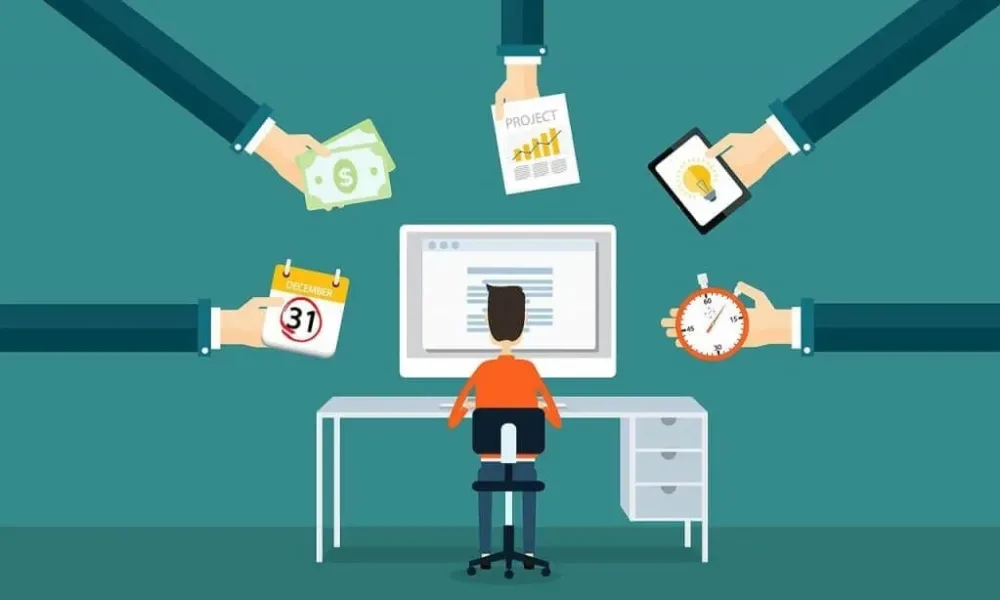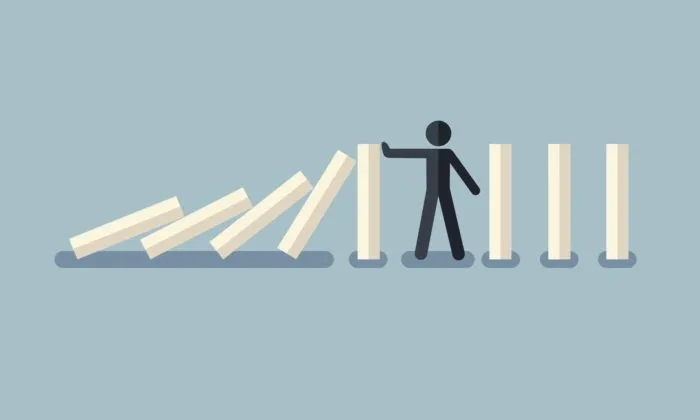In today’s fast-paced world, many of us carry work on our shoulders long after the office lights go out. Emails ping late at night, deadlines loom relentlessly, and the pressure to perform can feel unending. According to recent studies, workplace stress is one of the leading causes of burnout, anxiety, and even physical health issues.
Stress isn’t just about feeling busy — it’s about the gap between the demands placed on us and our ability to cope. When left unmanaged, it can silently chip away at creativity, motivation, and overall well-being. But the good news is that stress is not an unchangeable reality. With the right mindset, strategies, and support, you can regain control and thrive — even in high-pressure environments.
This article explores the roots of workplace stress, its impact on your body and mind, and actionable strategies to manage it effectively.
Table of contents
- Understanding Workplace Stress
- The Impact of Stress on Mind and Body
- The Psychology of High-Pressure Work
- Strategies to Manage Workplace Stress
- Stress-Reducing Techniques for the Workplace
- Changing Your Mindset About Stress
- Creating a Stress-Resilient Work Routine
- The Importance of Emotional Intelligence
- Technology and Stress Management
- Signs You Need Professional Support
- Lessons From High-Pressure Professions
- The Long-Term Benefits of Managing Stress
- A 7-Day Stress-Management Challenge
- Final Thoughts: Thriving, Not Just Surviving
Understanding Workplace Stress
What Is Workplace Stress?
Workplace stress arises when job demands exceed your capacity to meet them. It’s not merely working hard — it’s feeling overwhelmed, under-supported, or out of control. Stress triggers both mental and physical responses: racing thoughts, tension, fatigue, and sometimes even illness.
Stress becomes harmful when it’s chronic — when deadlines, pressure, and expectations create a constant state of alert rather than temporary bursts of focus.
Common Causes of Workplace Stress
- Excessive Workload – Too much to do in too little time.
- Lack of Control – Feeling powerless in decisions or processes.
- Unclear Expectations – Ambiguity about roles or responsibilities.
- Toxic Work Culture – Poor communication, office politics, or unsupportive colleagues.
- Job Insecurity – Fear of layoffs, restructuring, or not meeting performance standards.
- Long Hours – Extended workdays that erode personal time.
- Digital Overload – Constant notifications and the inability to disconnect.
Even when you love your job, these factors can accumulate, creating stress that diminishes productivity and happiness.
The Impact of Stress on Mind and Body
Physical Effects
- Headaches and migraines
- Muscle tension and back pain
- Sleep disturbances and insomnia
- Weakened immune system
- High blood pressure and heart-related risks
Mental and Emotional Effects
- Anxiety and irritability
- Difficulty concentrating
- Mood swings and frustration
- Decreased motivation
- Feelings of overwhelm and helplessness
Behavioral Effects
- Overeating or poor nutrition
- Procrastination
- Withdrawal from colleagues or activities
- Increased use of alcohol or stimulants
Recognizing these signs early is essential for preventing burnout and maintaining a sustainable career.
The Psychology of High-Pressure Work
Stress is not always bad. Eustress, or positive stress, can sharpen focus, improve problem-solving, and boost performance. The problem arises when stress becomes chronic and uncontrolled — leading to mental exhaustion and reduced efficiency.
Understanding your stress triggers — whether deadlines, interpersonal conflict, or high stakes — allows you to approach them more strategically rather than reacting impulsively.
Strategies to Manage Workplace Stress

1. Prioritize and Organize
- Make a daily or weekly to-do list.
- Use tools like task managers, calendars, or the Eisenhower Matrix to separate urgent from important tasks.
- Break larger projects into smaller, manageable steps.
Organization reduces overwhelm by giving you a clear roadmap of what to tackle first.
2. Set Boundaries
- Learn to say “no” when demands exceed capacity.
- Define your working hours and communicate them clearly.
- Limit checking emails or messages after work hours.
Healthy boundaries protect your mental energy and create a sense of control.
3. Practice Mindfulness and Meditation
Mindfulness helps you observe thoughts without judgment, reducing anxiety and rumination.
- Simple breathing exercises: inhale for 4 counts, hold for 4, exhale for 6.
- 5–10 minutes of meditation before work can calm your nervous system.
- Mindful breaks during the day improve focus and reduce tension.
4. Take Regular Breaks
The brain is not designed for prolonged focus.
- Follow the Pomodoro Technique: 25 minutes of work, 5 minutes of break.
- Stand, stretch, or take a brief walk every 60–90 minutes.
- Step outside if possible — natural light and fresh air reduce cortisol levels.
Breaks prevent mental fatigue and boost productivity.
5. Physical Activity
Exercise is one of the most effective stress reducers:
- Releases endorphins, the body’s natural mood boosters.
- Reduces muscle tension and improves circulation.
- Boosts energy and mental clarity.
Even 20–30 minutes of daily activity — a brisk walk, yoga, or light gym session — can significantly lower stress levels.
6. Nutrition and Hydration
Your brain and body thrive on balanced fuel:
- Eat whole foods, fruits, vegetables, and lean proteins.
- Avoid excessive caffeine or sugar spikes that increase anxiety.
- Stay hydrated; dehydration can exacerbate fatigue and irritability.
7. Sleep and Recovery
Sleep is non-negotiable for stress management.
- Aim for 7–9 hours per night.
- Maintain a consistent sleep schedule.
- Avoid screens 30–60 minutes before bed.
Sleep restores your body, improves focus, and helps regulate emotions.
8. Build Support Systems
- Share challenges with trusted colleagues or mentors.
- Seek support from friends or family.
- Consider professional help if stress becomes unmanageable — therapists, coaches, or counselors can provide tools and guidance.
Strong social connections buffer stress and provide perspective.
9. Focus on What You Can Control
Stress often comes from worrying about things beyond your control.
- Identify what’s within your influence and take proactive steps.
- Accept what you cannot change, and redirect energy toward actionable solutions.
This mindset shift reduces feelings of helplessness.
10. Celebrate Small Wins
Recognizing achievements — even minor ones — fuels motivation and resilience.
- Keep a “success journal” of completed tasks.
- Reward yourself for milestones reached.
- Positive reinforcement strengthens the habit of progress.
Stress-Reducing Techniques for the Workplace
1. Deep Breathing
- Inhale deeply for 4 seconds, hold for 4, exhale for 6.
- Repeat 5–10 times during stressful moments.
2. Progressive Muscle Relaxation
- Tense and release muscles from head to toe to relieve tension.
3. Visualization
- Picture a calm, safe place or a successful outcome to stressful tasks.
4. Mindful Pauses
- Before responding to an email or message, take a breath to reset your emotional response.
Changing Your Mindset About Stress
Stress itself isn’t the enemy — your response is.
Consider stress as feedback rather than a threat:
- Deadlines → opportunity to improve time management
- Criticism → chance to learn and grow
- Workload → motivation to delegate or prioritize
Reframing stress as a signal for action rather than a burden empowers you to take control.
Creating a Stress-Resilient Work Routine
- Morning Preparation: Start the day with mindfulness, exercise, and a clear plan.
- Midday Recharge: Take lunch breaks away from your desk; hydrate and move.
- Evening Wind-Down: Set boundaries for work and prioritize restorative activities.
- Weekly Reflection: Review tasks, wins, and areas to improve without judgment.

A consistent routine reduces unpredictability — one of the biggest stress triggers.
The Importance of Emotional Intelligence
High-pressure environments demand emotional intelligence:
- Recognize and manage your emotions.
- Understand colleagues’ perspectives.
- Communicate assertively and empathetically.
EQ strengthens relationships, reduces conflicts, and creates a calmer work atmosphere.
Technology and Stress Management
Technology can be both a source of stress and a tool to reduce it:
- Set limits on notifications to avoid constant interruptions.
- Use productivity apps to organize tasks and deadlines.
- Utilize meditation or mindfulness apps for guided breaks.
- Schedule “no-screen” periods to recharge.
Signs You Need Professional Support
Even with strategies in place, some stress may require external help. Seek support if you notice:
- Persistent fatigue or insomnia
- Frequent headaches or stomach issues
- Intense anxiety or panic attacks
- Irritability or emotional outbursts
- Lack of interest in work or social activities
Professional support can provide coping techniques, therapy, and long-term strategies to prevent burnout.
Lessons From High-Pressure Professions
Professionals in high-stakes fields — like medicine, aviation, or emergency response — manage stress using:

- Strict routines and checklists
- Peer support and debriefing sessions
- Mindfulness and breathing techniques
- Regular physical activity
- Clear boundaries between work and personal life
Applying similar principles in any workplace enhances resilience.
The Long-Term Benefits of Managing Stress
When workplace stress is managed effectively:
- Productivity increases
- Creativity and problem-solving improve
- Relationships with colleagues become stronger
- Physical and mental health are preserved
- Job satisfaction and overall happiness rise
Stress management isn’t just about survival; it’s about thriving in a high-pressure world.
A 7-Day Stress-Management Challenge
Day 1: Identify top 3 workplace stressors and write them down.
Day 2: Practice 5–10 minutes of mindfulness meditation.
Day 3: Take a 15-minute walk during your workday.
Day 4: Set boundaries for after-work emails and messages.
Day 5: Journal three small wins from the day.
Day 6: Try a deep breathing or progressive muscle relaxation session.
Day 7: Reflect on your week and celebrate progress, then plan adjustments for next week.
Small, consistent steps can dramatically improve your stress resilience.
Final Thoughts: Thriving, Not Just Surviving
Workplace stress is inevitable in a high-pressure world, but it doesn’t have to control you. By combining awareness, practical strategies, and mindset shifts, you can transform stress from a silent enemy into a manageable, even motivating force.
Remember:
- Motivation sparks action, but habits sustain it.
- Boundaries protect your energy.
- Mindfulness and self-care aren’t luxuries — they’re essentials.
- Support and connection are as crucial as effort.
The goal isn’t to eliminate stress entirely — it’s to build the resilience, tools, and mindset to thrive despite it.
With the right approach, a high-pressure workplace can become a space not of anxiety, but of growth, creativity, and fulfillment.
